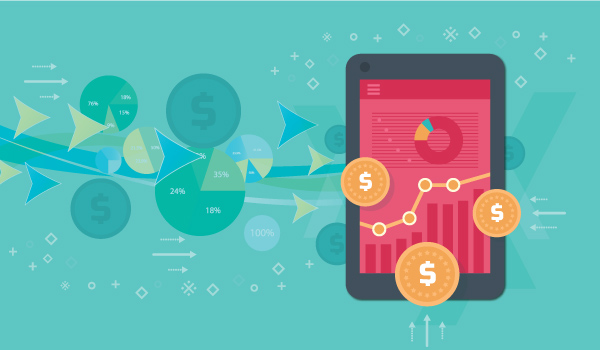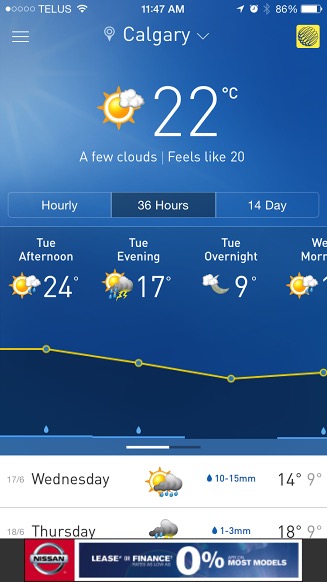Monetizing your application: we sell advertising space

Before you begin the active phase of developing an application, the idea of which you have already thought out, you should answer two basic questions:
- Why does the user need your program?
- How will you monetize your application?
As for the first question, here each developer must decide for himself, it is difficult to advise something. And with the answer to the second question, we, Appodeal , will try to help.
When it comes to monetizing the application, the first thing many people get is the idea of allocating advertising space. Income can be very good, and the volume of the mobile advertising market is increasing all the time. For example, Statista predicts its increase to $ 59.67 billion in 2017. It would be nice to get at least a fraction of this amount, right?
We recommend at least to explore the option of generating income through advertising in the application.
')
We plan advertising in the application at the start of development.
If you come to the decision to sell advertising space in the application, think about how you can make advertising noticeable (thus increasing your income), but do not annoy users. The more users of your application, the more valuable the place where you plan to advertise. Here you need a balance, because you can not annoy people with constantly pop-up banners.
We are now talking about banner advertising. On another variety - native advertising - we wrote in one of the past articles. Banner advertising in mobile applications is still at the initial stage of its development. Types of advertising and methods of its placement are constantly changing, consider the four main ones.
Horizontal banner: the simplest and most common type
Pros : it is easy to find a place to place a banner in the application.
Cons : brings less income than other types of advertising (eg, native).

Static ad-inset: this advertising takes up the entire screen of the application. The user must click on the "X" to return to the application.
Pros : such advertising is noticeable to everyone. Advertisers like this type because it encourages the user to act (even if it is closing the advertisement). Brings a good income.
Cons : It can annoy users, so using a static ad in full screen is possible only from time to time. Here you need to think carefully about how to show ads without losing users.

Expandable. Advertising increases, if you tap on it, occupying either the entire screen or half
Pros : all this users are not too annoying, so there is no particular problem. In addition, “advertising blindness” does not develop. One of the best types of advertising in mobile applications.
Disadvantages : there are very few users who really want to click on such an advertisement, therefore, the income will be appropriate.

Animated advertising insert: add media content, we get animation
Pros : flexibility and interactivity, more explicit user interaction. Animated advertising-insert usually brings a good income.
Cons : this kind of advertising is technologically complex. Here the system processes video, GIF and other media files. Since the resources of a mobile device are being expended on this, either the application itself or the user's device can “slow down” during the display of such advertising. Plus, part of the communication channel is eaten off, and in mobile networks it is not too wide anyway.

In addition to the above types of advertisements, there are others. All species (at least most) are listed here . The link provides a fairly detailed systematization, so we recommend reading. In the meantime, let's try to understand how your users can affect the increase in advertising revenue in the application.
Need to know your users.
Of course, we are not talking about meeting each person personally. The fact is that for advertisers, any information that can help increase conversion is extremely important. And the more information about the target audience of the application advertisers can get, the more expensive the advertising space may be.
1. The size of the audience. Typically, the cost of banner advertising is calculated on the CPM-model (cost per thousand impressions). Therefore, important information for both the application developer and advertiser is not only data on the number of application downloads, but also the number of active users (during the day, week, month) of your program. If users work with the application several times a day, the number of impressions can be quite high.
2. Geography of users. For most advertisers it matters from which countries / cities users enter the application. It is important for business to advertise to the target audience, which is determined by factors (language, country, city). The developer can get more money for advertising, if such information is provided to the partner company.
3. Age, gender, profession. Thousands of applications are created for a specific audience. Age, gender, profession, user security - all of this may be important for the advertiser. And if your application is created, for example, to evaluate coffee houses, an advertiser who sells coffee or equipment for its production will come to you.
All these details may look insignificant, but in fact this is important information for advertisers. The more data about users of the application you provide to partners, the more income you can get.
You can collect this information using services like MixPanel or Flurry . Plus, you can work with methods like Facebook Login , getting user data from the social network.
How to sell ad space?
There are three main ways to monetize an application with the help of advertising banners and some other types of advertising:
1. Optimizers of revenue from mobile advertising, that is, Appodeal and similar services.
2. Service exchanges like DoubleClick and OpenX.
3. Direct work with advertisers and agencies.
There are a lot of advertising networks, exchanges and other services now. But optimizing this kind of platform for working with a specific application is a problem for the developer. Using specialized services removes this problem. As you know, we at Appodeal offer to sell advertisements, using access to most networks through a single interface and selling impressions through the auction method between them. Judging by the growth of 50% per month, about which Pavel Golubev recently spoke , the developers who are familiar with us agree that this is convenient and effective.
As for direct advertising, sometimes it is even more profitable for a developer than working with any networks. But it’s not so easy to search for an advertiser yourself, and companies themselves don’t go to developers very often. This method is suitable for highly specialized applications that, by their very nature, are connected with all potential advertisers.
And as output
If you intend to monetize the application, selling the “advertising platform” is a good idea. Before we start monetization, let's repeat the main points of the article:
1. Decide on a place to advertise at the very beginning of development. If you have such an opportunity, test various possibilities for advertising, using user assistance - you need to choose the format that is least annoying to the user, but quite noticeable.
2. Study the audience of the application. The more information, the better.
3. Be prepared to offer various advertising options to those who are interested.
4. Examine the advertising networks and services, to find the best option with which to get started, feel free to try the Appodeal service. If your application is narrow-topic and the number of advertisers in this market amounts to no more than dozens, it may be more profitable to contact them directly.
Source: https://habr.com/ru/post/293518/
All Articles